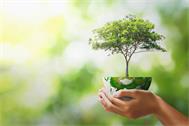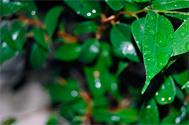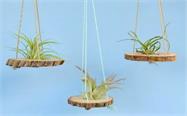Text A Crop plants and environment
The conditions in which an organism lives are known as environment.
All plants require favourable environmental conditions for their better growth and development. Crops that are not well adapted to the region where they are cultivated will not produce high yields.

In crop selection climate is the most important environmental factor. The crops which grow best under relatively cool or moderate conditions1 include wheat, oats, barley, rye, potatoes, sugar beets, red clover, and many grasses. Corn, cotton, sorghum, rice, soybeans do best2 under warmer conditions.
Crops also differ in the length of the growing season required for the optimum development. A frost-free period3 less than 125 days is unfavourable for most crops.
Another factor influencing the growth of plants is humidity that is why4 the average annual rainfall is a very essential characteristic of an area.

Light is necessary for photosynthesis – the process by which plant food is manufactured. Life processes of many plants are influenced by the relative length of day and night. Long-day plants require long days for their better growth, while short-day plants produce flowers and fruit: when the days are short. Most small grains belong to the group of long-day crops, among short-day crops are corn, sorghum, rice, millet, and soybeans. There are also crops which are not affected by the length of day, these are cotton, sunflower, and buckwheat.
Air is an important environmental factor, too. It supplies carbon dioxide for plant growth and oxygen for respiration as well as for chemical and biological processes in the soil.

Notes to the text
1) under conditions – при условиях, в условиях;
2) do well (better, best) – растут хорошо (лучше, лучше всего);
3) a frost-free period – безморозный период;
4)
 |
that is why – поэтому, вот почему.
MIND THE DIFFERENCE:
Grammar and vocabulary activities
6. Identify the voice of the predicate in the following sentences, translate them:
| They have planted ... . | They will plant... . | ||
| It is planted ... . | They plant... . | ||
| We are planting ... . | They will be planted ... . | ||
| It has been planted .... . | They are planted ... . | ||
| They were planted .... . | We planted ... . | ||
| It was planted ... . | He plants ... . | ||
7. Translate sentences in the Passive Voice:
1. The growth of plants is greatly influenced by environmental conditions.
2. The seedbed preparation was followed by planting the crop.
3. The growth of cotton is badly affected by low temperature.
4. The development of some crops is not influenced by the length of the day.
5. This area was given good cultivation.
6. More intensive use of land will be followed by an increase in food production.
7. The development of this crop is highly favoured by rainfall.
8. Put the adjective in brackets in the correct form:
1. Corn requires (warm) climatic conditions than wheat.
2. Climate is the (important) environmental factor of all.
3. The growing season of this crop is (short) than that of corn.
4. Cotton requires (little) rainfall than many other crops.
5. Today is the (short) day in the year.
6. Environmental conditions of this area are (favourable) for the growth of potatoes than for small grains.
7. If you use fertilizers, you will obtain (high) yields.
8. It is the (good) soil for oats.
9. Read aloud the sentences in which the word most is equivalent to the Russian большинство .
1. Crops produce maximum yields under the most favorable conditions.
2. Most grasses are used as food for animals.
3. Irrigation is applied on most farms of this region.
4. The increase of food production is one of the most important problems of our days.
5. Most small grains require much light for their growth.
Listening and Speaking Focus
10. Watch the video and tell your groupmates the main idea of it: https://www.youtube.com/watch?v=ha9ktZApaic&ab_channel=LudyAnnTouch








